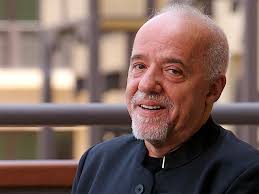THE FIRST STORY-TELLER
Catagory:Fiction
Author:The Thousand and One Days” Arabian Nights” ( Miss Pardoe)
Posted Date:03/21/2025
Posted By:utopia online
"Be it known to you, my lord," said the first story-teller, "that a short time ago I had in my purse a thousand piastres, which were enough for my expenses, and I was contented with my lot. One day, however, I had been taking a walk, and on my return I sat down to rest and chewed a bit of haschich, took my coffee, and lit my pipe; in two or three hours my head began to buzz. I went out again and walked about the streets. In front of a coffee-house I noticed some men collected round an improvisatore, who was singing and accompanying himself on the timbrel. I sat down in the circle and asked for coffee. I lighted my pipe and commenced listening. The improvisatore depicted a young girl. Oh, how beautiful she was! it was impossible not to love her. Compared with her Iyleika[ was but as a star in the presence of the sun, and Ablia but as the dirt of the street. I was so captivated by his description of the beautiful girl, that when he ceased I gave him all the money I had about me.
Personages who figure in Arabian legends.
"Next day, at the same hour, while the haschich[Pg 48] was boiling in my brain, I ran to the coffee-house, where the improvisatore was commencing the continuation of his yesterday's story. He now told how paladins and padishahs disputed for the possession of my adorable Haridée, and how she disdained their love and refused their offers. I became more distracted this time than before, and the improvisatore got from me twice as much as he did the day before. I gave him all that I had, even to the last farthing.
"Next day I never left my little seat at the café. The improvisatore struck his tambourine this time with more vehemence while singing the charms of the beautiful Haridée. He then began to relate how Haridée was in love with a certain worthless fellow. At this it was impossible to tell what I felt; the hydra of jealousy devoured my heart and poured a maddening poison through my veins. I became as one deprived of all sense and feeling. But stop; the parents have separated the lovers and plunged them in an ocean of tears. I again breathed more freely, and emptied my pockets to fill the purse of the improvisatore.
"Thus were passed many days in succession. The flame of love and the stings of jealousy tormented me without ceasing. The haschich did its part unremittingly, and threw me at one moment into fire, and at another into ice and snow, hurling me from the height of bliss into the depths of misery. My fortunes fell with me, and I soon became totally destitute. But my thoughts were otherwise taken up than with eating or drinking; my love for Haridée had become the only source to me of life and action. In this way, with empty stomach and purse, I went one day to the café after having paid a few paras for a little haschich. I listened—the voice of the improvisatore trembled; in truth he wept, and grief was depicted on his features.
"'What has happened?' I asked, drawing near to him.[Pg 49]
"'Poor Haridée!' he replied.
"'What is the matter? What has taken place?' I exclaimed.
"'She is dead!' he muttered.
"I wept, I tore my clothes, and fled I scarce knew where. When the first transports of my despair had subsided, I saw pass before my eyes, still under the influence of the haschich, the funeral of Haridée. The mournful cry of 'There is no God but God, and Mahomet is his prophet,' echoed in my ears, amidst the outcries and the lamentations of the women. I ran like a madman from street to street, while the crowd followed on my path with the coffin of Haridée, and the frightful groans and cries burst forth louder and louder on my ears. At length, worn out, and sore all over, I fell down in a state of complete unconsciousness, and when I came to myself, I perceived that I was at the threshold of my own home. I arose, and endeavoured to recal past events, which as they woke up in my memory caused me to feel the utmost surprise. My purse was empty, my heart broken, and the blood was flowing down my face, for in my fall I had cut open my head. After remaining a whole day in the house, I took a small piece of haschich and went to a coffee-house near at hand, where my friend the landlord poured me out a cup of mocha, and gave me a pipe. It was there that I met my two friends, and received from you, my gracious lord, a look, and a nod."
"This story is not a bad one," replied Soliman Bey, "but do not too hastily take to yourself the honour of my greeting; let me hear first what the others have to say."


.jpg)














 👁 :131
👁 :131
 👁 :38
👁 :38
0.jpg) 👁 :63
👁 :63
 👁 :151
👁 :151
 👁 :42
👁 :42
 👁 :62
👁 :62
758.jpg) 👁 :152
👁 :152
757.jpg) 👁 :4
👁 :4